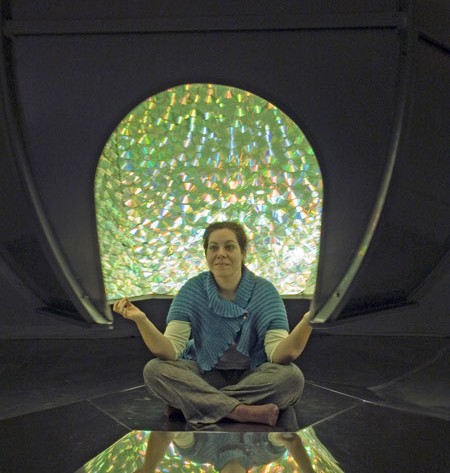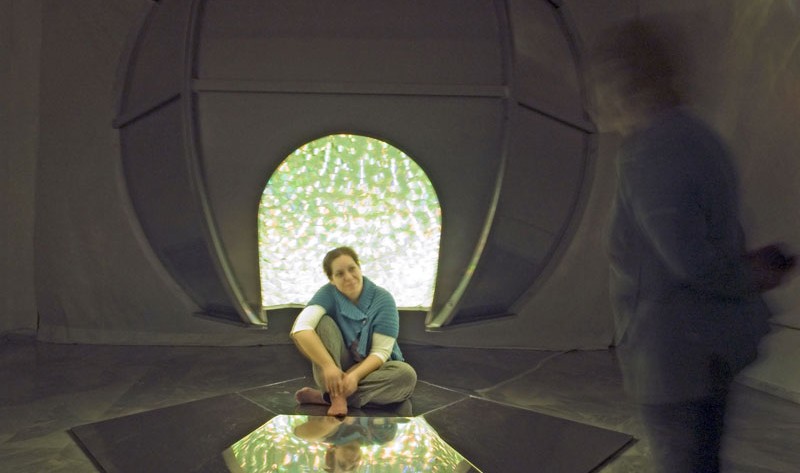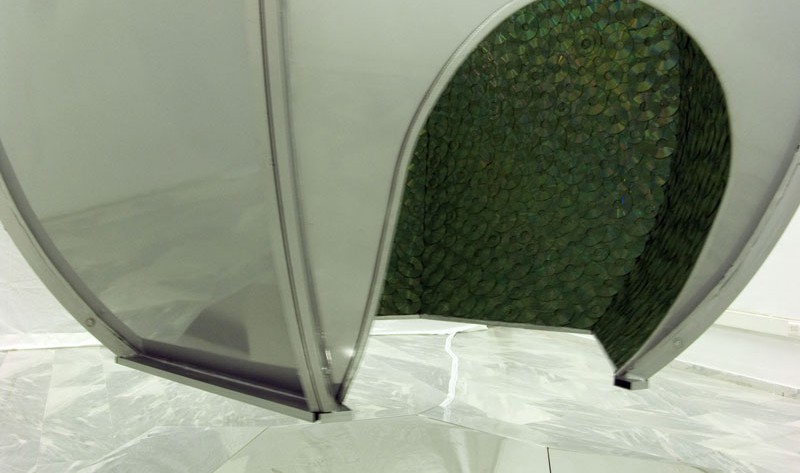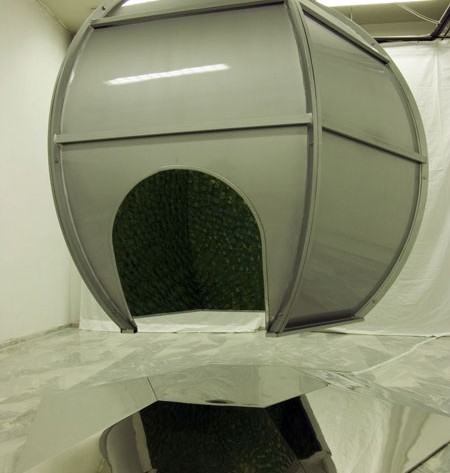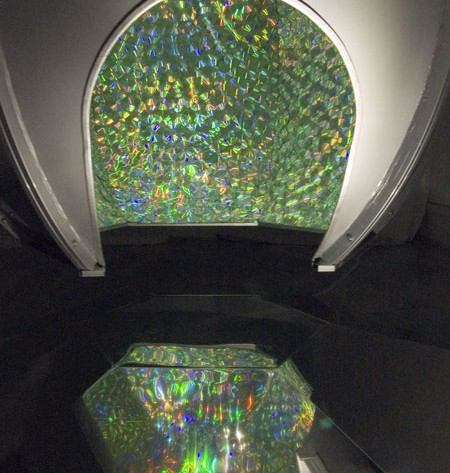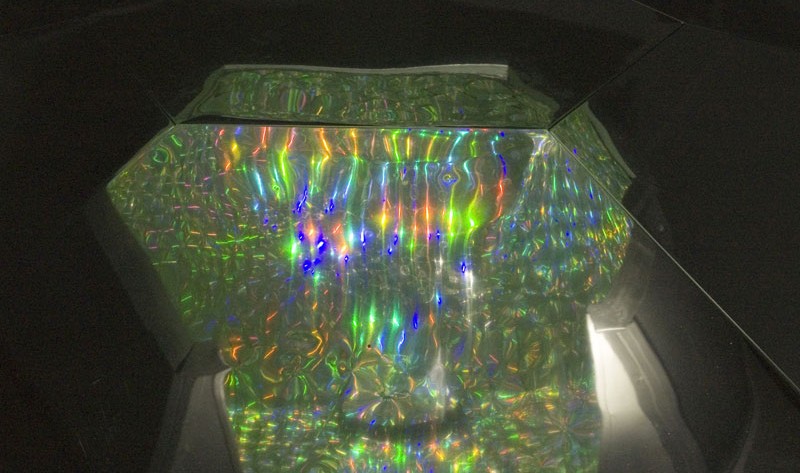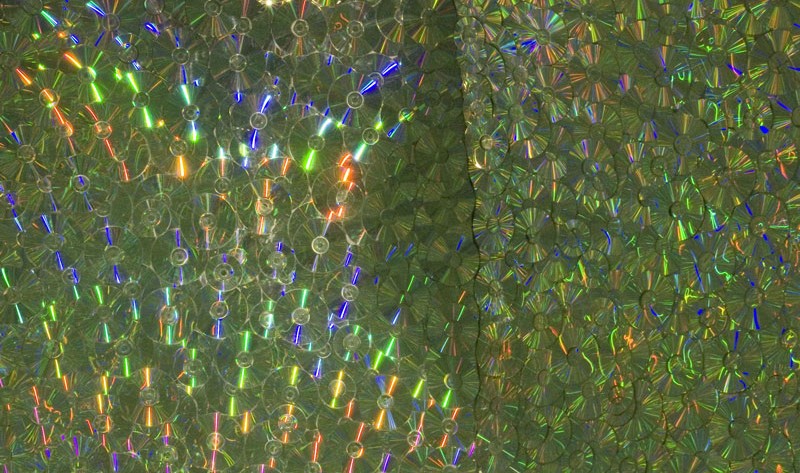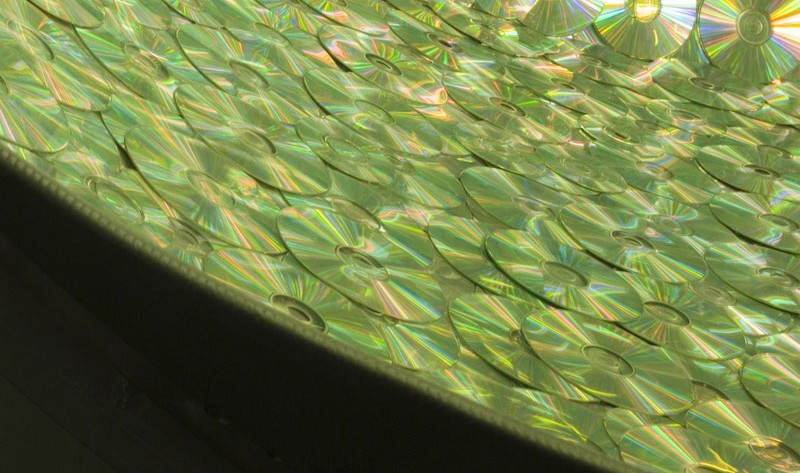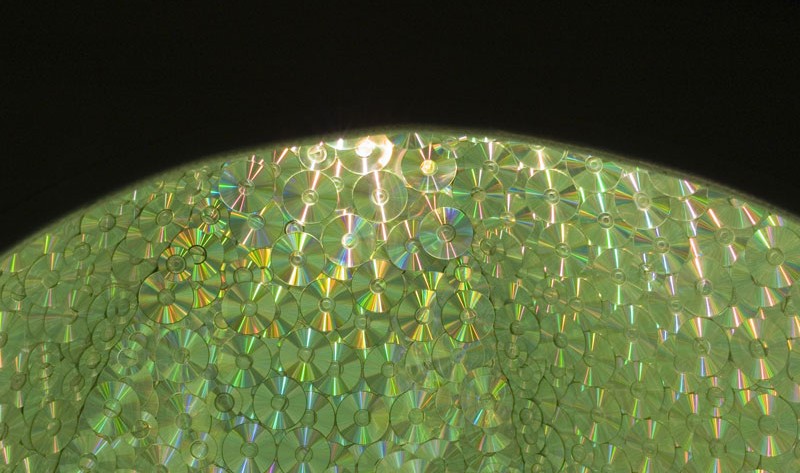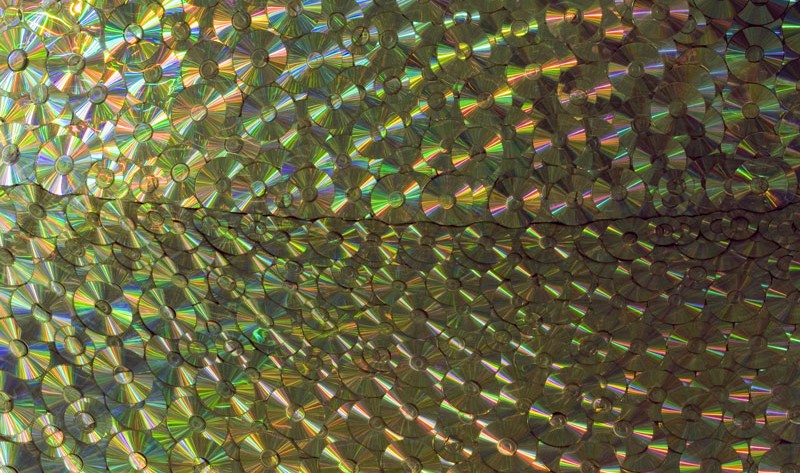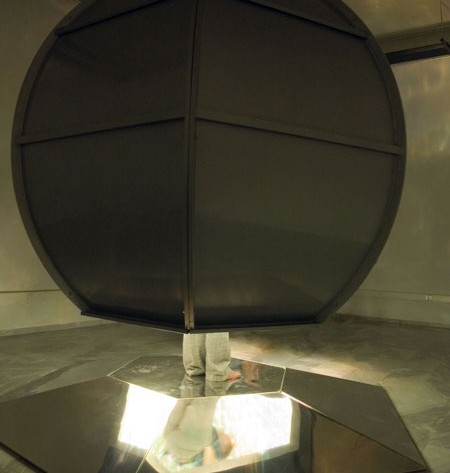The concept of information, with a musical starting point
{Useful object}
Polymorphic mirror
The inspiration for this installation is the music of Anestis Logothetis, who, with his personal system of polymorphic notation, created a controlled improvisation for the performers of the same score, so that each concert was different. The spectator entering the installation triggers the lighting and thus is able to see multiple fragmented images of himself in the surface of the CD. In respect of the sense of information, the CD is the useful object on which we record information.
Installation
Dimensions: Variable
Materials: Tubes 3.5 x 2cm, 7mm sheet metal, CD, oilbased adhesive, LED lights, 2 speakers, 3 vibrating speakers, 0.6mm thick stainless steel sheeting, foam board, wood, 11 cm doubling plate, 3 700kg metal joints, 2800kg stretching belts, 2.5cm clutch wire, 2 1cm washers, 1-inch nuts, 6 coach screws, sound system, bass amplifier, light sensor.
Anestis Logothetis
Logothetis was born to Greek parents in 1921, in Pyrgos in eastern Romylia. He spent the years 1934-42 in Greece, before moving to Vienna where he studied civil engineering. From 1944 to 1952 he studied style and composition. In 1960 he won the Koerner Prize and in 1963 shared with Xenakis the first prize in the composition competition of the Athenian Technological Institute with the work Mesouranisi. He died in Vienna in 1994.
Some works:
- Operas: The Judgement of Paris in Paris, Daidaleia, What is Sisyphus’ stone made of?
- Radio operas: Nekrologio, Butterflies, Resurrections, Insect Party
- Works for orchestra: Accumulation for violin and orchestra, Coordination, Mesouranisi, Maiandros, Completion, Diffusion
- Works for solo instruments: Waterfall, Catalyst, Hydrogeios for flute
- Electronic works: Fantasmata, Meditation, Cyclopeia
- Vocal music: Rivers of the Styx, Acheron III, Pyriflegethon,Kyriarchiko song for church organ and voice

